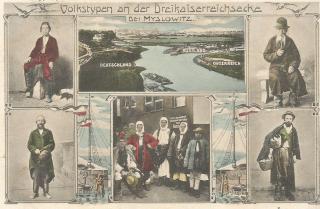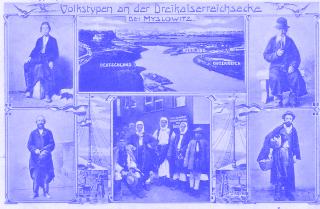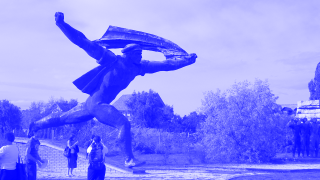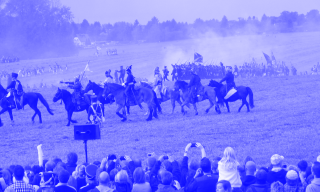Topic
Images of German-Polish-Jewish Relationships

This Polish-German cooperative project explores the iconography of Polish-German-Jewish relationships in the first decades of the »visual age«, that is, from the 1890s to the 1930s. Visual mass media became central to world perception in this phase, while German-Polish-Jewish relationships grew increasingly adversarial.

The Power of Reproduction: Images of German-Polish-Jewish Relationships in the Visual Mass Media of the 1890s to 1930s
As the 19th century shifted into the 20th, European societies were living through numerous processes of change — including a rapid progress of media technology, which impacted patterns of perception. This project shines a spotlight on two easily accessible media of daily life: the illustrated picture postcard, or postcard for short, that became a dominant mass medium around the turn of the century, and the poster, whose own popularity soared as the postcard’s sank.
How, we ask, did these media influence images of Polish-German-Jewish neighbourliness from the late 19th century onwards? This was a period in which hundreds of thousands of people migrated into the Rhineland and Ruhr region for industrial employment, while hundreds of thousands others toiled in the Prussian fields, where their temporary migrant status afforded them only limited rights. At the same, the second half of the 19th century saw the rise of nationalist and antisemitic movements, which began to influence Polish-German-Jewish neighbourhoods in increasing and multi-faceted ways. One important question concerns the visual staging of the various groups and group-specific value discussions. While postcard production reached its pinnacle during a wave of nationalist ideologies, posters became an important medium of political propaganda over the course of the 1920s.
This collaborative project is being conducted with the University of Katowice, the Silesian Digital Library and the Centre for Historical Research in Berlin of the Polish Academy of Sciences (CBH PAN).
The project is funded by the German-Polish Research Foundation (DPWS).


